Transportation & Infrastructure
Cruise Control
A former industrial site at the Port of Montreal is transformed into a tourist destination.
GRAND QUAI AND PORT OF MONTREAL TOWER I MONTREAL I PROVENCHER_ROY
BY MATTHEW MARANI
The Old Port Of Montreal, like that of Buffalo and New York, connected the Wheat Belt of the Great Plains to markets beyond the continental shelf. In those cities, a complex web of shipping and rail routes would transfer cereal crops for storage across an array of piers and grain elevators and silos for export abroad. The completion of the St. Lawrence Seaway in 1957, which provided direct maritime access from the Great Lakes to the Atlantic Ocean, rendered those silos and elevators redundant, and they were left to decay over the succeeding decades.
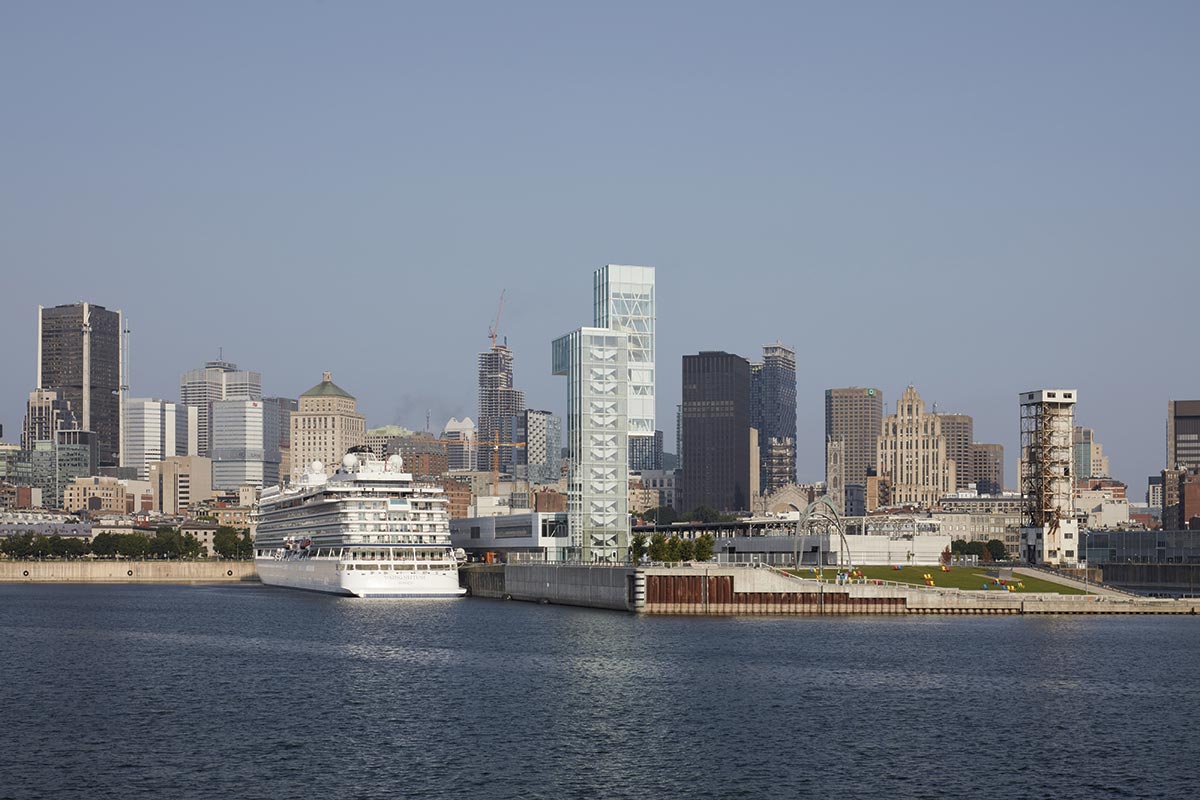
PHOTO © JAMES BRITTAN
The Grand Quai extends into the St. Lawrence River.
The Grand Quai du Port de Montreal (the Grand Pier) is a site over a century old within that defunct industrial ecosystem. Formerly known as Alexandra Pier, it served as both a cargo facility and reception area for immigrants and travelers until its conversion into a cruise terminal in 1967. But, like its surroundings, it too faded with time. That is, until May 2023, when the firm Provencher_Roy, based in Montreal, wrapped up a multiphase renovation and redesign of the facility, including the newly opened Port of Montreal Tower.
The architects were awarded the commission back in 2014 following a competition, and construction began in 2015. For Provencher_Roy, the project not only entailed the rehabilitation of the existing two terminals located on the nearly 350,000-square-foot pier, but also opening the hermetic postindustrial site—entry was previously permitted only for cruise passengers and the cars and buses ferrying them to and from the city—to the public, through several gestures.
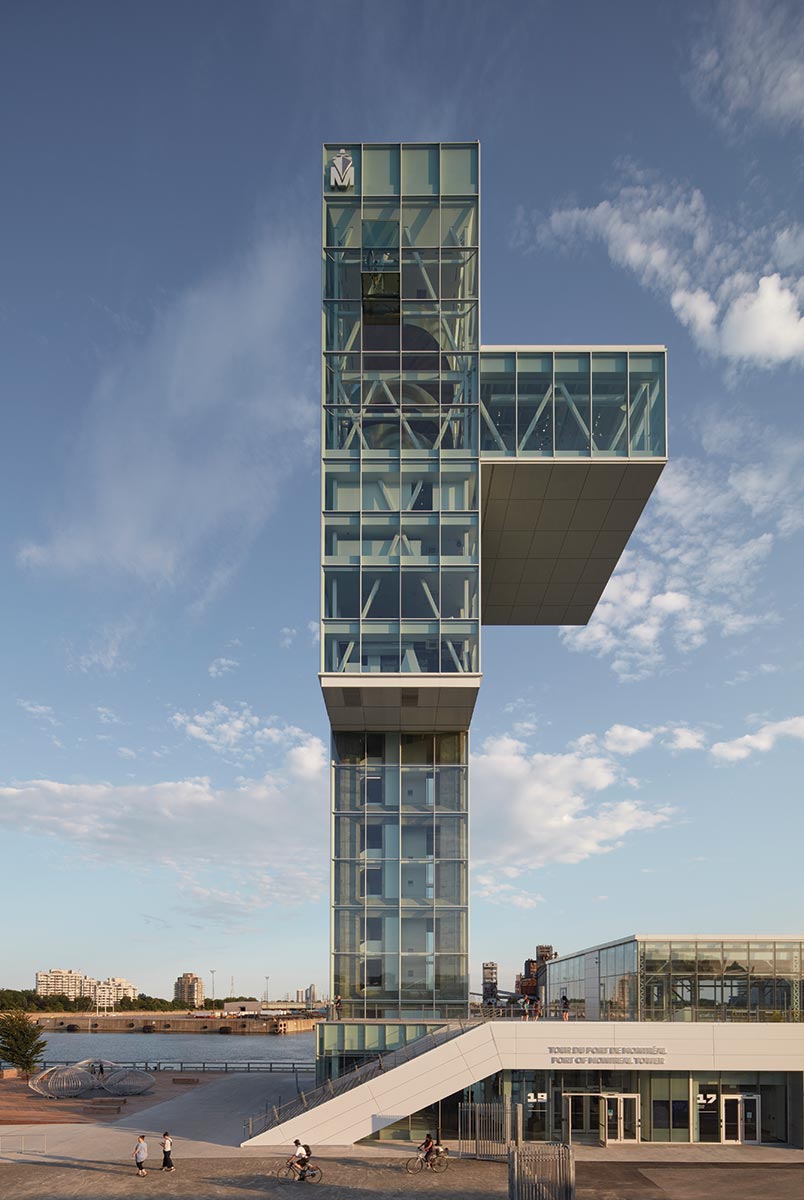
PHOTO © JAMES BRITTAN
The Port of Montreal Tower is The Grand Quai’s most conspicuous landmark.
In collaboration with landscape architect NIPPaysage, also Montreal-based, the architects linked the pier to the Old Port’s existing park infrastructure through a planted, red cedar–paved esplanade atop Terminal 1, the primary cruise depot. They also carved out a public park at the eastern extremity of the pier, which slopes downward toward the St. Lawrence River, as something of an outdoor amphitheater. The Port of Montreal Tower is an additional visual landmark and experience aimed to draw the public to the formerly inaccessible waterfront.
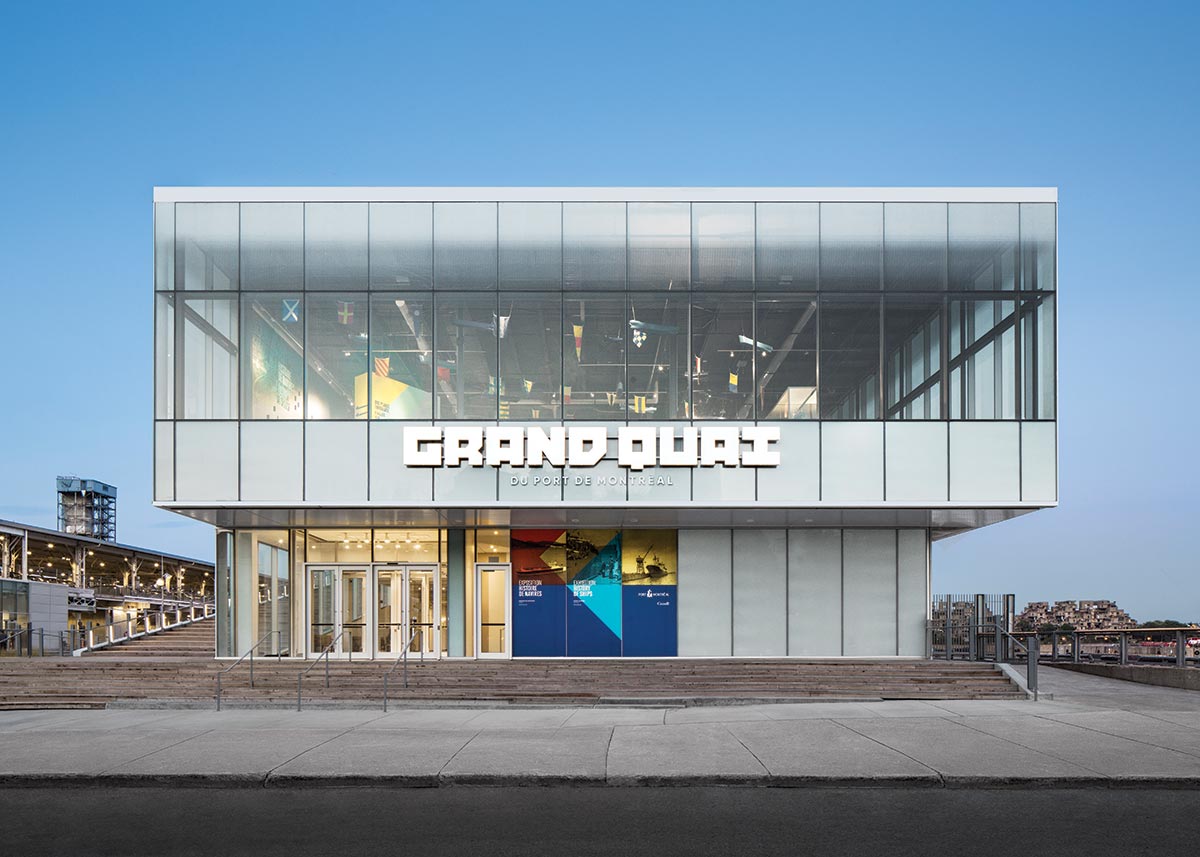
Photo © Stephane Brugger
Terminal 1 now features an entrance that faces the city and a landscaped esplanade on its roof.
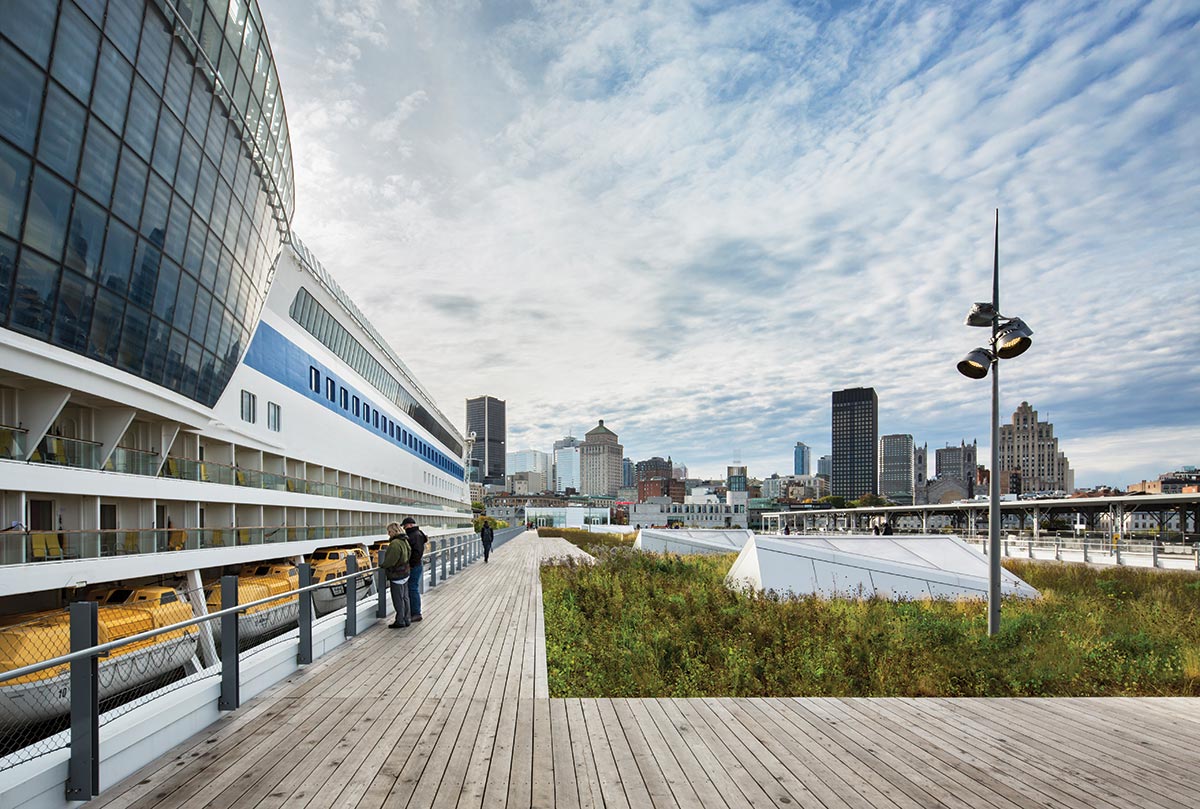
Photo © Stephane Brugger
“The Grand Quai and Tower project is the realization of the Port of Montreal’s vision to open the site to the public and give Montrealers and visitors access and views between two emblematic components of the City of Montreal, the St. Lawrence River and Mount Royal,” explained Provencher_Roy principal partner Sonia Gagné, referring to the promontory and park just west of downtown.
The renovation of the hangar-like terminals—each measures just under 70,000 square feet—entailed reworking the facility’s program. Terminal 2 was converted into the site’s parking garage, with an additional ticketing pavilion and boat landing for Croisières AML, a sightseeing cruise line servicing Montreal. That move freed up space at the ground level within the redesigned Terminal 1 for circulation of some 50,000 tourists streaming to and from 50 cruise liners annually.
Within both terminals, the design team opted for a degree of conservation. “We sought to celebrate the heritage of the existing rigorous and pragmatic infrastructure,” said Provencher_Roy partner Sophie Wilkin. To that end, damaged sections were repaired, and, throughout, all lead-based paint was removed and those areas repainted a luminous white. Steel bracing was added to bring the two terminals, which are linked by a newly constructed pedestrian bridge, up to current seismic requirements.
Unlike Terminal 2, which, as a parking facility, is left partially exposed to the elements, Terminal 1 underwent a substantial reorientation and recladding. A new entrance pavilion announces itself to the riverfront promenade with brash and playful signage and a welcoming glass facade—the former concrete-clad entrance was accessed on the pier, behind a now demolished perimeter wall—and that transparency is carried through the approximately 760-foot-long terminal with floor-to-ceiling insulated-glass units and skylights carved into the esplanade above. That emphasis on lightness extends to the terminal’s cladding, which consists of horizontally oriented bright-white aluminum panels.
The Port of Montreal Tower, the final component of the Grand Pier, is the facility’s principal homage to the Old Port’s commercial past. The tower rests upon a raftlike concrete slab, supported below by concrete caissons that reach down to the bedrock beneath the St. Lawrence River. It rises to nearly 215 feet, and that height, coupled with its vertigo-inducing cantilevers to the north and west, resembles the remaining rusted grain elevators nearby. The structure of the tower, like that of the terminals, is laid bare, this time by ultra-clear glass panels that frame its concrete core and steel hollow structural sections, the latter supporting those daring protrusions. Care was taken to add visual interest to the exposed concrete through a subtle play in formwork, the inner edges of the pillars being angled inward to generate further depth and shadowing.
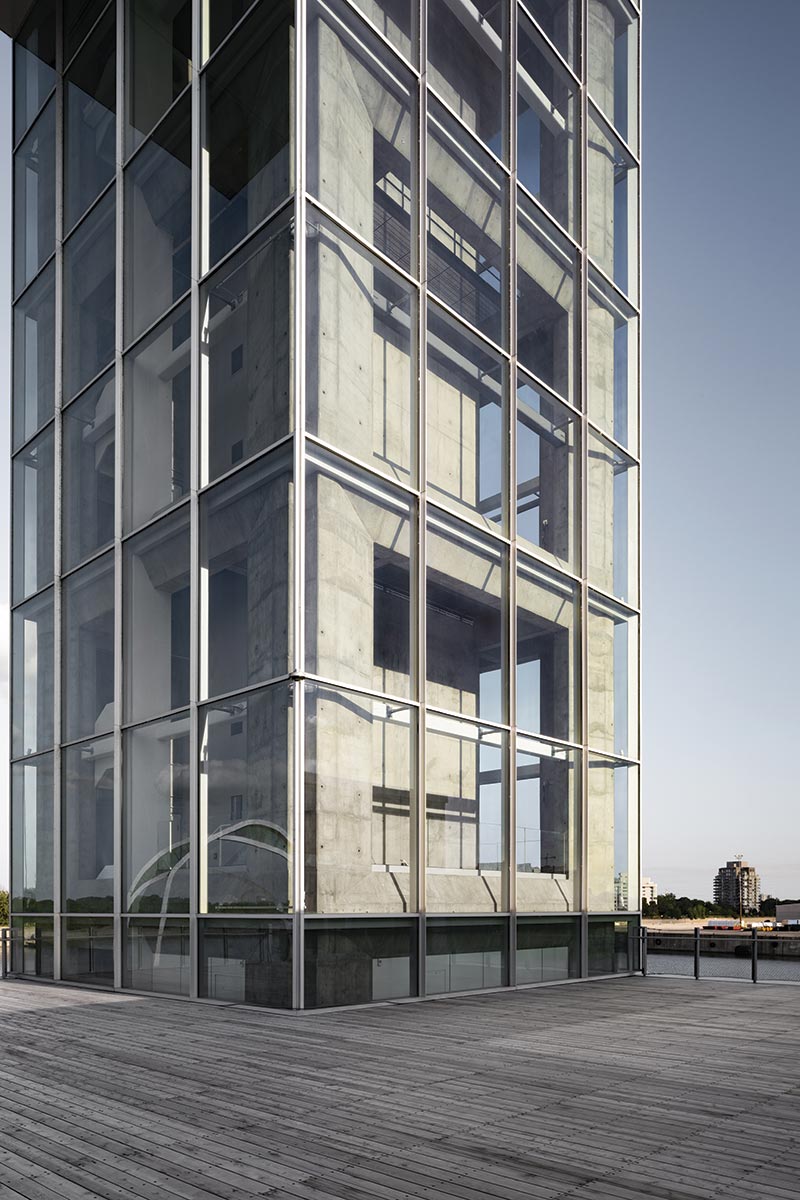
PHOTO © JAMES BRITTAN
The Tower core is fully visible.
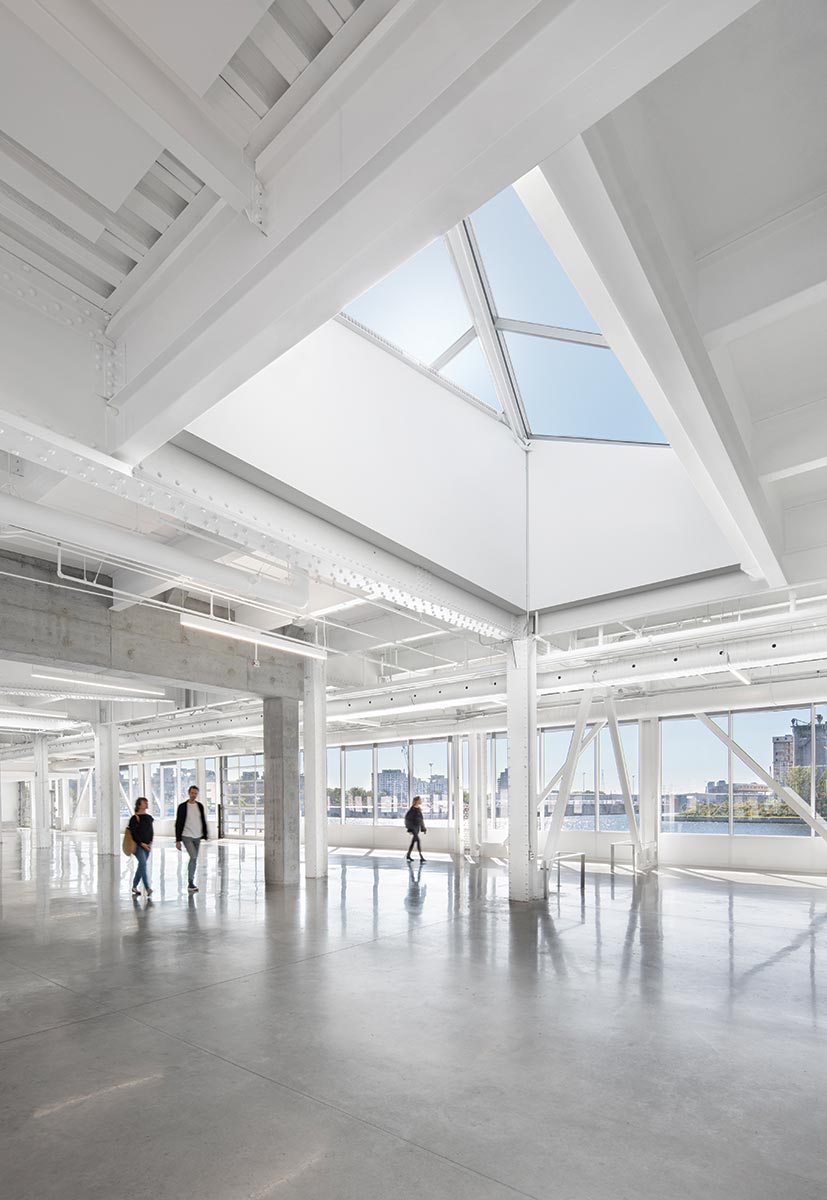
PHOTO © JAMES BRITTAN
The terminal and tower interiors bear a minimal material palette.
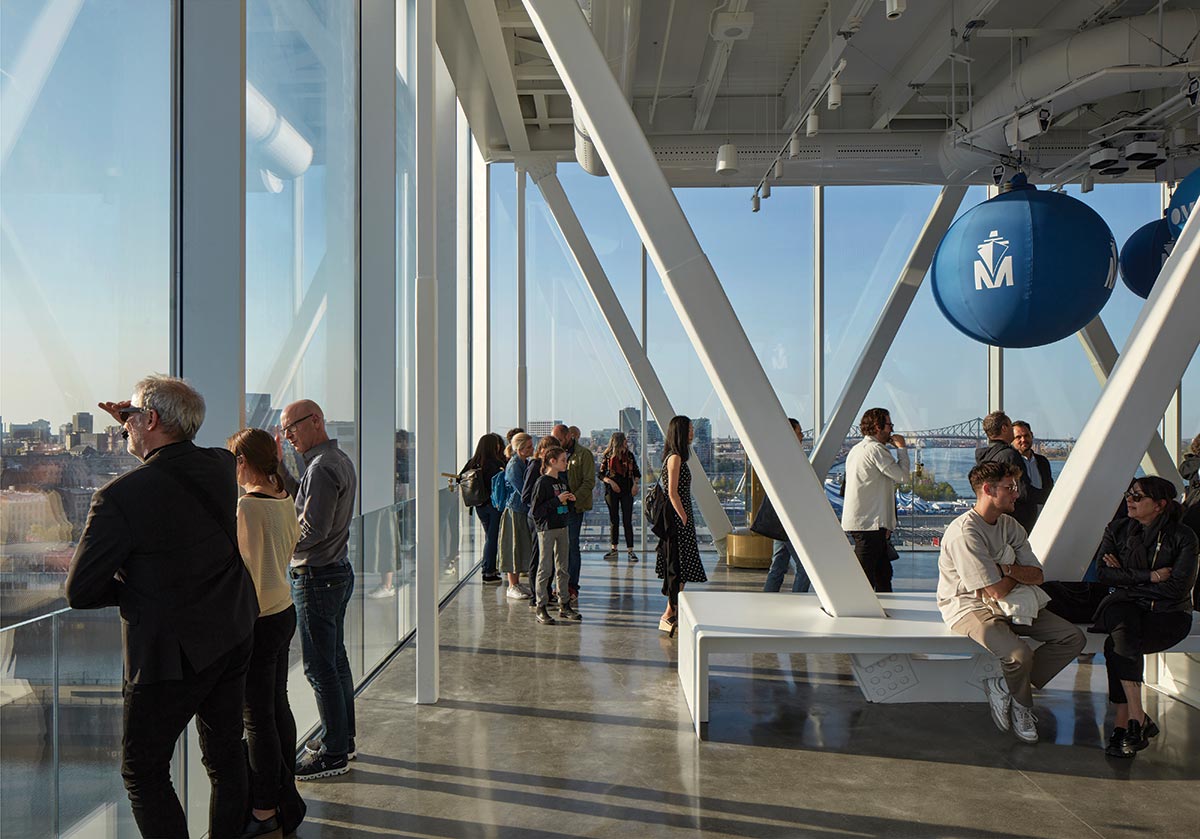
PHOTOGRAPHY: © STEPHANE BRUGGER
Visitors enter the tower through the ground-floor, river-fronting lobby to a bank of elevators that whisk them directly to the 13th-floor observatory. The observatory, along with the lobby and an executive room tucked into the 10th floor, can be rented as event spaces, supported by a commercial kitchen on the 11th floor. At the observatory level, a sculptural helicoid staircase, fashioned of wood, nods to the spiral staircases that line Montreal’s historic streetscape and, with its golden-hued balustrades, to the port’s heyday as a leading exporter of wheat products. At the tower’s summit, one has unobstructed views in all directions, of landmarks like Moshe Safdie’s Habitat 67 and Basilique Notre-Dame, as well as to Mount Royal. This denouement is a sweeping panorama, looking back and toward the city’s past, present, and future.
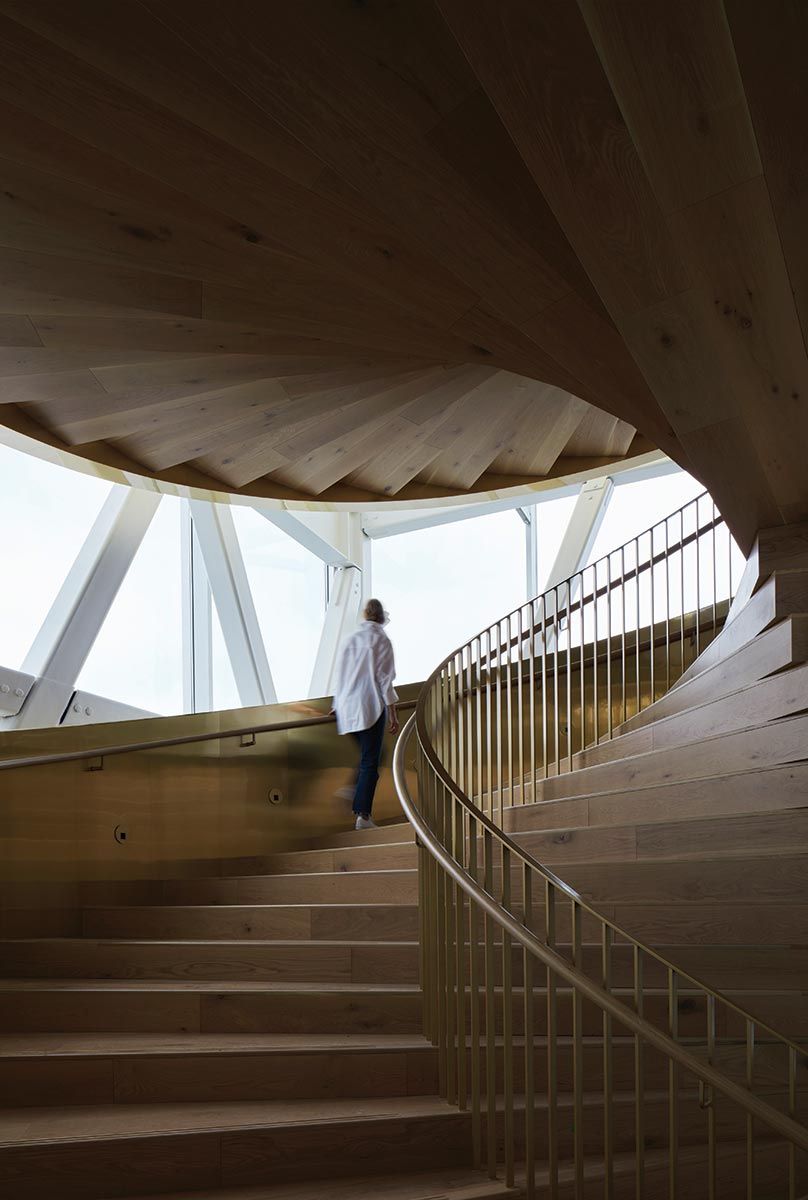
PHOTO © JAMES BRITTAN
A stairwell delivers visitors to the tower summit.
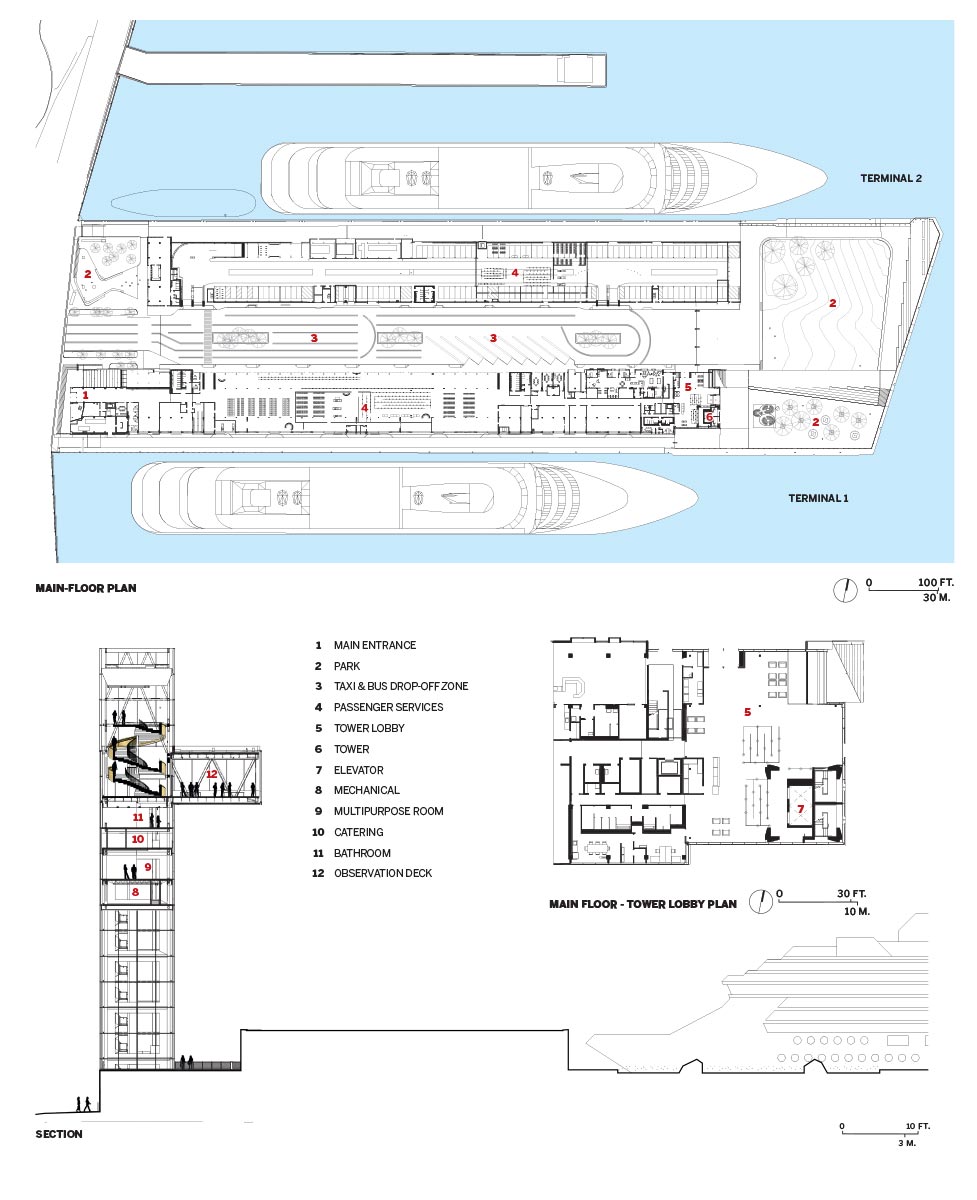
Credits
Architect: Provencher_Roy — Sonia Gagné, principal partner; Sophie Wilkin, partner
Engineers: NCK (structural & civil); Pageau Morel (electromechinal)
Consultants: WSP Group (maritime infrastructure); Elema (structural glass); CS Design (lighting design); RWDI (wind tunnel); NIPPAYSAGE (landscape architect)
General Contractor: Pomerleau
client: Port of Montreal
Size: 410,000 square feet (Grand Quai); 11,000 square feet (Port of Montreal Tower)
Cost: $29.5 million
Completion date: May 2023
Sources
Steel: Structures XL
Concrete: Coffrage Alliance
Damper: Gerb
Metal panels: Clermont
Curtain Wall: Vitreco
Glazing: Agnora
Doors: Alumico
Acoustical Ceilings: Pinta Acoustic; Armstrong
Paints & Stains: Sherwin-Williams
Helicoidal Stairwell: Mirage (wood); Chemtal (balustrade)
Lighting: Luxtech; Hi-Tech Lighting
Wood terrace and furniture: Goodfellow









